The best sleeping bag liners are precious middle layers, like pickle in a cheddar sandwich. Sitting between the human and the sleeping bag, or the bread and the cheese, neither would be the same without them – yet they're under-appreciated.
You might be undecided on whether a sleeping bag liner (not to be confused with a bin bag liner) is actually useful. Your sleeping bag is already warm enough, so why would you need to fork out another £50+ on more camping kit you don’t really need?
This is a totally valid question, which we’ve asked ourselves before, too. But after years of camping experience, we’d never go on a trip without one – and here’s why.
Selfishly, your sleeping bag needs a liner. Liners are an elixir of youth for your sleeping bag, shielding it against everything that harms it (namely: your dirt and sweat). You wouldn’t sleep directly under your duvet without a bedsheet, right?
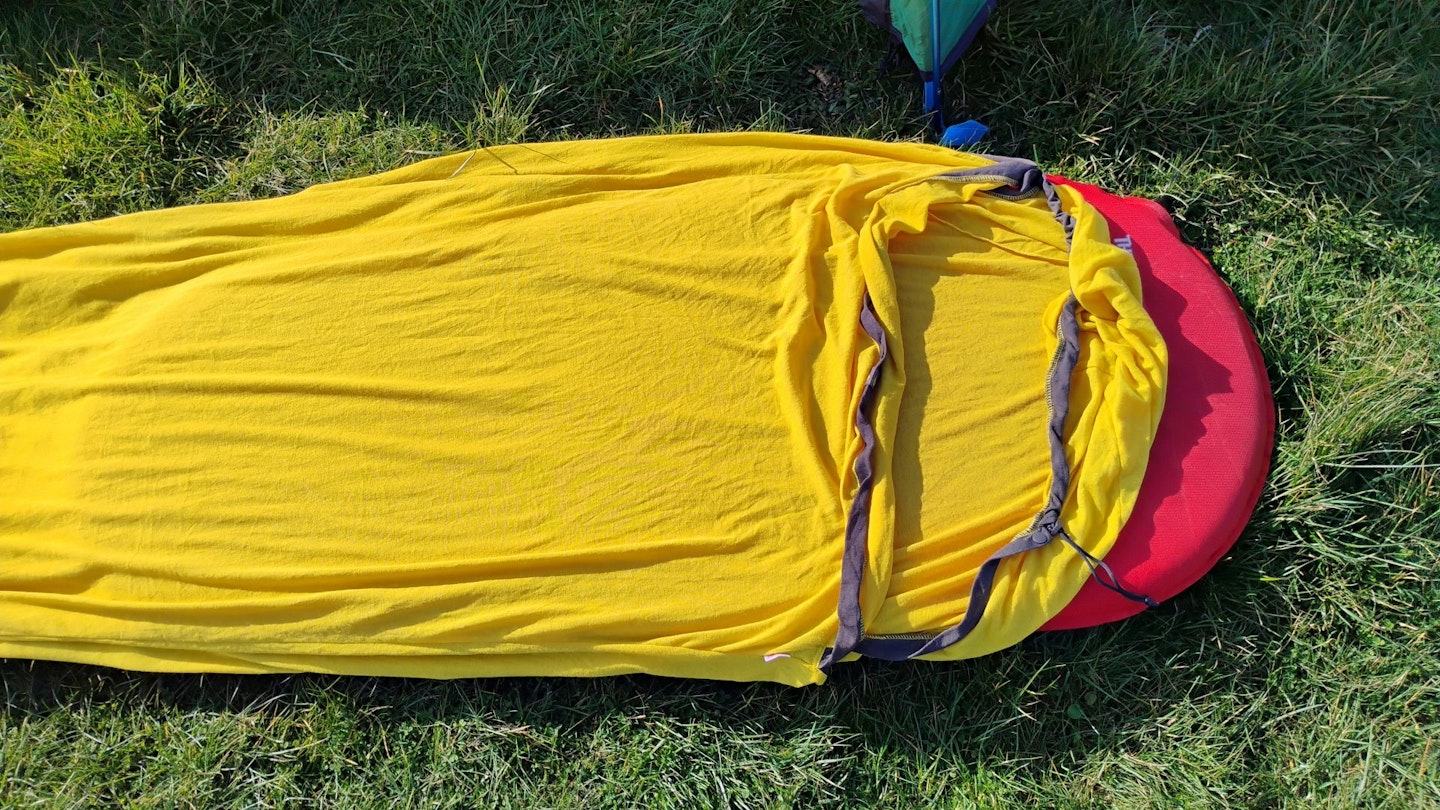
But sleeping bag liners are generous with who they benefit. They don’t just protect what’s on the outside, they also help the human inside to sleep better.
If your sleeping bag isn’t very warm, a fleece liner like the Rab Thermic Neutrino will give you a much-needed warmth boost.
Lighter silk liners, like the Lifeventure Ultimate Silk, help you to regulate your temperature and make your sleeping bag more comfortable.
Plus, the same liner can be equally useful in both the Mediterranean or the Arctic. It can be used to protect a sleeping bag that’s warm enough on its own, or can be slept in – if the temperature allows.
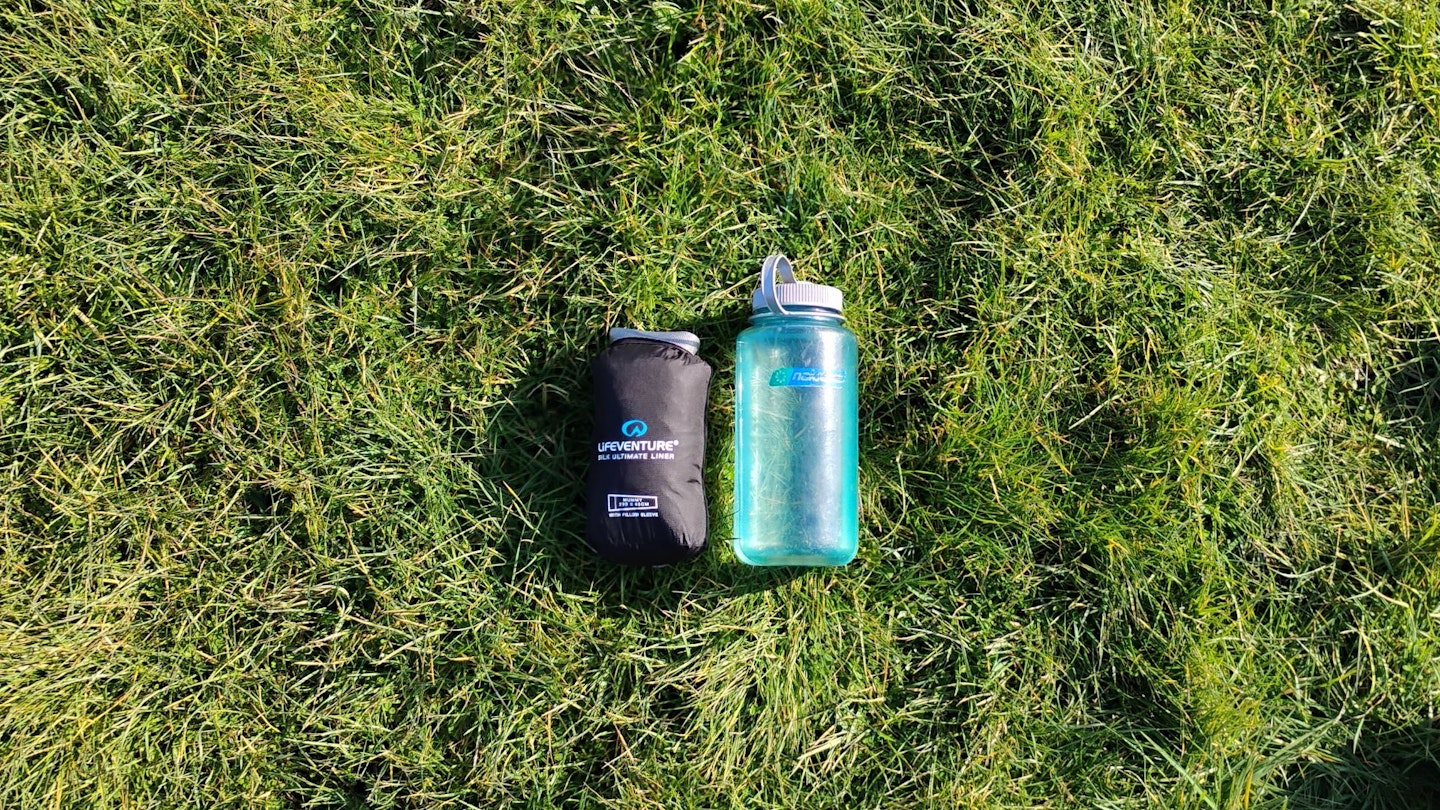
If you’re not already convinced, on top of all of this they’re also super handy for mountain refuges and hostels (as well as camping, of course). And they’re much less hassle to wash than a sleeping bag.
In short: they’re worth it. But if your sleeping bag liner isn’t well-suited to your needs, it won’t be much use – and could even be a waste of money.
So how do you find the best sleeping bag liner? When every brand states that their liner adds about three degrees of warmth and is made of cutting-edge ‘PolyThermoLite’ fabric, it’s difficult to know where to start.
To help you choose the right liner for your needs, we’ve spent months testing the best sleeping bag liners for 2025. We’ve also compiled our many years of camping experience to put together a buying guide, helping you to make the most informed choice possible.
How we tested the best sleeping bag liners
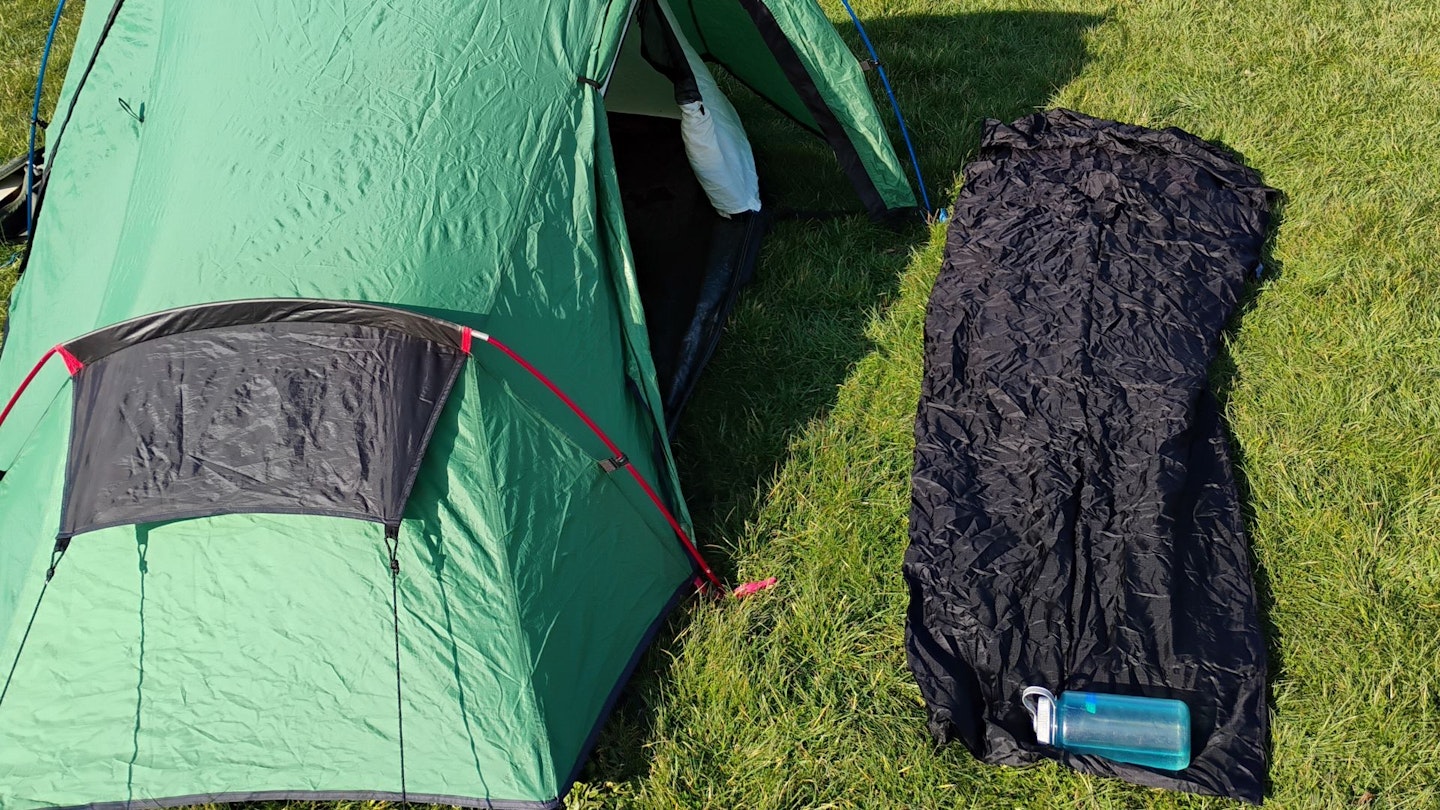
The LFTO team is made up of outdoor gear experts with years of experience using sleeping liners. We carefully curated these liners to ensure there's something for serious winter campers as well as happy-go-lucky summer backpackers.
The reviews in this list have been written by digital writer Evie Nichols, with each one informed by thorough, real-life tests performed over several months at the start of 2025.
Evie tested these liners in her The North Face Kilo Bag, a mummy-shaped down sleeping bag that's rated to 0°C. To judge how comfortable each liner is, she carefully assessed their size, shape and texture, as well as ease of use and perceived added warmth.
To verify each of the liners’ measurements, Evie measured their weight with her own kitchen scales (with the pack included) and used a tape measure for the pack size.
We reached a conclusion on the overall performance of each of these sleeping bag liners through carefully assigning a score based on five criteria: comfort, weight, pack size, features and value.
Read more general info about how we test HERE.
Our shortlist: Five of the best sleeping bag liners for 2025
Best in test: Sea to Summit Reactor
Best for warmth: Rab Thermic Neutrino
Best for lightweight backpacking: Lifeventure Ultimate Silk
Best sleeping bag liners reviewed:
The Sea to Summit Reactor liner is perfect for adding extra warmth on lightweight adventures.
It’s made of super soft material (100% polyester), which feels very comfortable – almost like a base layer. There’s plenty of wiggle room inside as well, as it’s very stretchy.
It’s not as light as a silk liner (295g for the standard type), but feels a lot warmer – especially as you can use the hood drawstrings to tighten it around your head.
While it doesn’t feel as warm as a fleece liner, it’s much more breathable and lightweight. It’s compact too, with a pack size of approximately 22x15cm.
The Sea to Summit Reactor has a highly adjustable design. Using fasteners and a drawstring, you can create openings for your arms and feet, letting you walk around camp in it. This is surprisingly handy for nighttime trips to the loo (as long as your camp-mates won't be too surprised to see you walking around dressed like a giant yellow banana).
There's also plenty of space for getting in and out of the liner, and I found it was the perfect size inside my mummy-shaped sleeping bag. The fabric is treated with odour control, which seems to have worked well so far.
Overall, the Sea to Summit Reactor is a super versatile and compact liner which I love for its quirky features. It’s a very good for adding warmth and comfort to your sleeping bag, without sacrificing too much weight.
Pros
- Pretty lightweight and compact
- Warmer than silk alternatives
- Comfortable base layer feel
- Highly adjustable design
- Breathable fabric
Cons
- Not as warm as a fleece liner
- Heavier than silk alternatives
| RRP: | £65 / $74.95 (standard) |
| Weight: | 295g / 10.4oz (standard with drawcord) |
| Size range: | Compact or Standard |
| Dimensions: | 216x80cm (standard with drawcord) |
| Packed size: | 17x8cm |
| Material: | 100% polyester |
The Rab Thermic Neutrino is by far the warmest sleeping bag liner in this test. Made from 100% polyester, it feels like a lightweight fleece.
You could even sleep in it on its own on warm (but not too hot) nights. I tested it when it was 18°C outside, but I wouldn’t want to sleep in it in much warmer temperatures.
For the amount of added warmth, the weight of this liner (356g) isn’t too surprising – actually, it seems like a fairly good compromise. The pack it comes in does it a disservice, though, as it could compress much smaller.
It fit very well into my The North Face down sleeping bag, but I found it was a little longer than I needed it to be (I’m 170cm – or 5ft7 – tall). If I was smaller this might be annoying, but it wasn’t much of an issue for me. On the flip side, if you're particularly tall, you may find the 185cm length a little limiting.
The design is functional – there’s not as many interesting features as the other liners in this test, but it does what it sets out to do. The opening is wide and the material stretchy, so it’s easy to get in and out of.
An RRP of £70 seems expensive for a liner, but could help level up your current sleeping bag to a similar level of warmth as a down sleeping bag, at a fraction of the cost.
Overall, the Rab Thermic Neutrino is an excellent option for adding a significant warmth boost to your sleep system.
Pros
- Super warm
- Comfortable fleece-like feel
- Stretchy fabric
- Functional design
Cons
- Fairly heavy
- Not very compact
| RRP: | £70 / $70 |
| Weight: | 356g / 12.6oz |
| Dimensions: | 185x82cm |
| Packed size: | 26x13cm |
| Material: | 100% polyester |
This is an excellent choice if you’re looking for a super lightweight and compact liner (134g, 17x10cm for the mummy option). It won’t give you much extra warmth, though, as it’s very thin, but will help to regulate your temperature.
It’s made from 100% silk and feels soft, but not quite as premium as more expensive silk alternatives. Despite this, the material feels surprisingly durable. With an RRP of £64.99, it offers good value for money, too.
There’s several interesting features which mark this liner out. For example, you can find a hidden passport pocket at the bottom of the liner, which is handy for sleeping in hostels. You can also place your camping pillow in a sleeve at the top of the sleeping bag, which prevents it from slipping.
As well as this, there’s also a section of material at the top, which Lifeventure refers to as a ‘contact germ guard’. I found it breathable enough to cover my face while sleeping, so it would be handy for summer bivvying with midges.
I tested it in the mummy shape, but you can get a rectangular version as well. I found there was plenty of space inside, and it was relatively easy to get in and out of.
Overall, the Lifeventure Ultimate Silk liner is a good option for lightweight backpacking trips, where not much extra warmth is needed.
Pros
- Super lightweight
- Very compact
- Interesting features
- Good value for money
Cons
- Doesn't offer much warmth
- Not 'premium' quality
| RRP: | £64.99 |
| Weight: | 134g / 4.7oz (mummy) |
| Pack size: | 15x8cm (mummy) |
| Dimensions: | 220x85cm (mummy) |
| Material: | 100% silk |
The Lifeventure Cotton liner is an excellent choice for adventurers who want to keep a few home-comforts, particularly those who aren’t too concerned about backpack weight.
It’s almost identical to the Silk Ultimate, except it’s made of 100% cotton (and it’s much cheaper). It’s basically a bedsheet, but fits into a 21x19cm sized bag.
Like the Silk Ultimate, there’s a lot of extra material which comes out of my sleeping bag, but for this model it’s less useful. It bunches up at the top, which isn’t so comfortable inside a sleeping bag.
I tested the mummy version, but you can get a rectangular one as well. I found there was plenty of space inside. The side seam comes up very high, though, so it’s a bit awkward to get in and out of when camping.
This liner isn’t the best for hiking, as it’s quite heavy (384g) and bulky. As it’s made of cotton, it takes a long time to dry, too – not ideal if you're wild camping for a couple of days.
However, compared with synthetic material it feels much more natural against your skin and is a lot more durable. Plus, with an RRP of £26.99, it’s a lot more affordable than silk or polyester alternatives.
Overall, the Lifeventure Cotton is a super comfortable, budget-friendly liner that's ideal for sleeping in hostels or outside a sleeping bag.
Pros
- Feels like a bedsheet
- Durable materials
- Very affordable
- Includes a pillow sleeve
Cons
- Material bunches at the top of sleeping bag
- Heavy and bulky
| RRP: | £26.99 |
| Weight: | 384g / 13.5oz |
| Pack size: | 21x13 cm |
| Dimensions: | 220x90cm |
| Material: | 100% cotton |
The Therm-a-Rest Synergy liner is made from a stretchy polyester, which feels very comfortable against your skin – like wrapping yourself in a base layer.
There’s also a hood, which is large enough to put your pillow inside. Without a drawstring, though, I found I needed to bunch it around my head and neck for warmth, which isn’t as effective.
The opening is large, so it feels easy to get in and out of, even in a one-person tent. As it's mummy shaped, I found it fit the shape of my sleeping bag well, but due the hood, any excess material can bunch up at the top of the bag.
It weighs 427g, which is the heaviest in this test. Despite this, it still manages to be fairly compact (19x11cm).
While it’s definitely warmer than the Lifeventure Ultimate Silk, it’s not as warm as the Rab Neutrino liner. It offers about the same amount of warmth as the Sea to Summit Reactor, but it’s more affordable.
Overall, this is a comfortable and budget-friendly synthetic liner. Opt for the Therm-a-Rest Synergy if you need a moderate warmth boost, but you’re not too concerned about weight and pack size.
Pros
- Comfortable base layer feel
- Stretchy fabric
- Large opening
- More affordable than other polyester options
Cons
- Pretty heavy
- No hood drawstring
| RRP: | £54.99 / $49.95 |
| Weight: | 427g / 15oz |
| Pack size: | 19x11cm |
| Dimensions: | 203x79cm |
| Material: | 100% polyester |
What to look for in a sleeping bag liner?
Size and shape
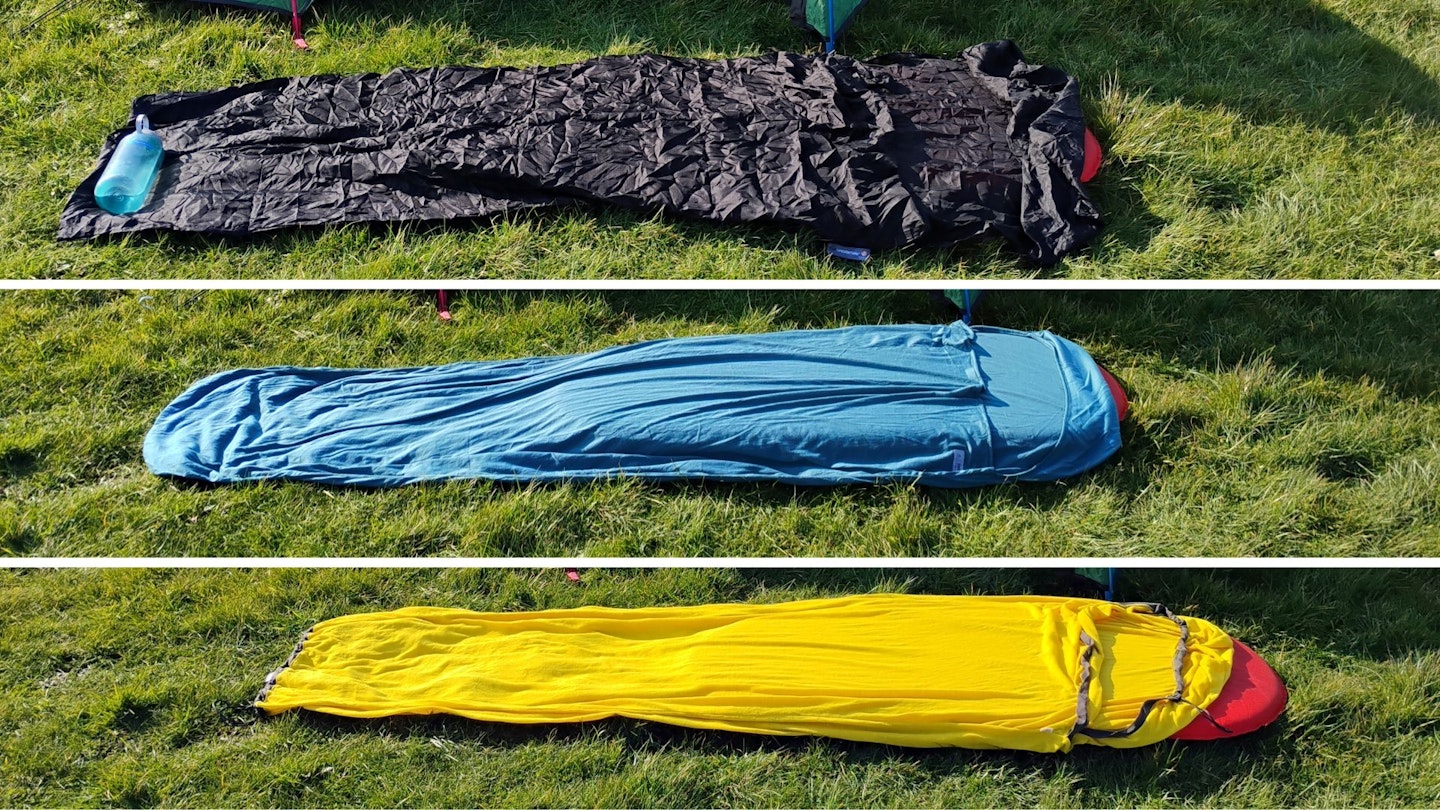
There are two main shapes of sleeping bag liner: mummy and rectangle. Mummy liners are wider at the shoulders and hips than at the ankles. Rectangular liners are, as the name suggests, a standard rectangle shape.
Mummy liners are best if you have a mummy-shaped sleeping bag. As they fit more closely around your body, they’re more snug. They also tend to be made of stretchy material, to compensate for the tighter fit. This shape tends to be slightly lighter, as there’s less fabric.
Rectangular liners, on the other hand, have more wiggle room. But this won’t be particularly useful if you have a mummy-shaped sleeping bag. So again, it depends on your type of sleeping bag. It’s best to use a rectangular liner on its own or with a rectangular sleeping bag.
Material
The most common types of sleeping bag liner material are: silk, cotton and polyester.
Silk
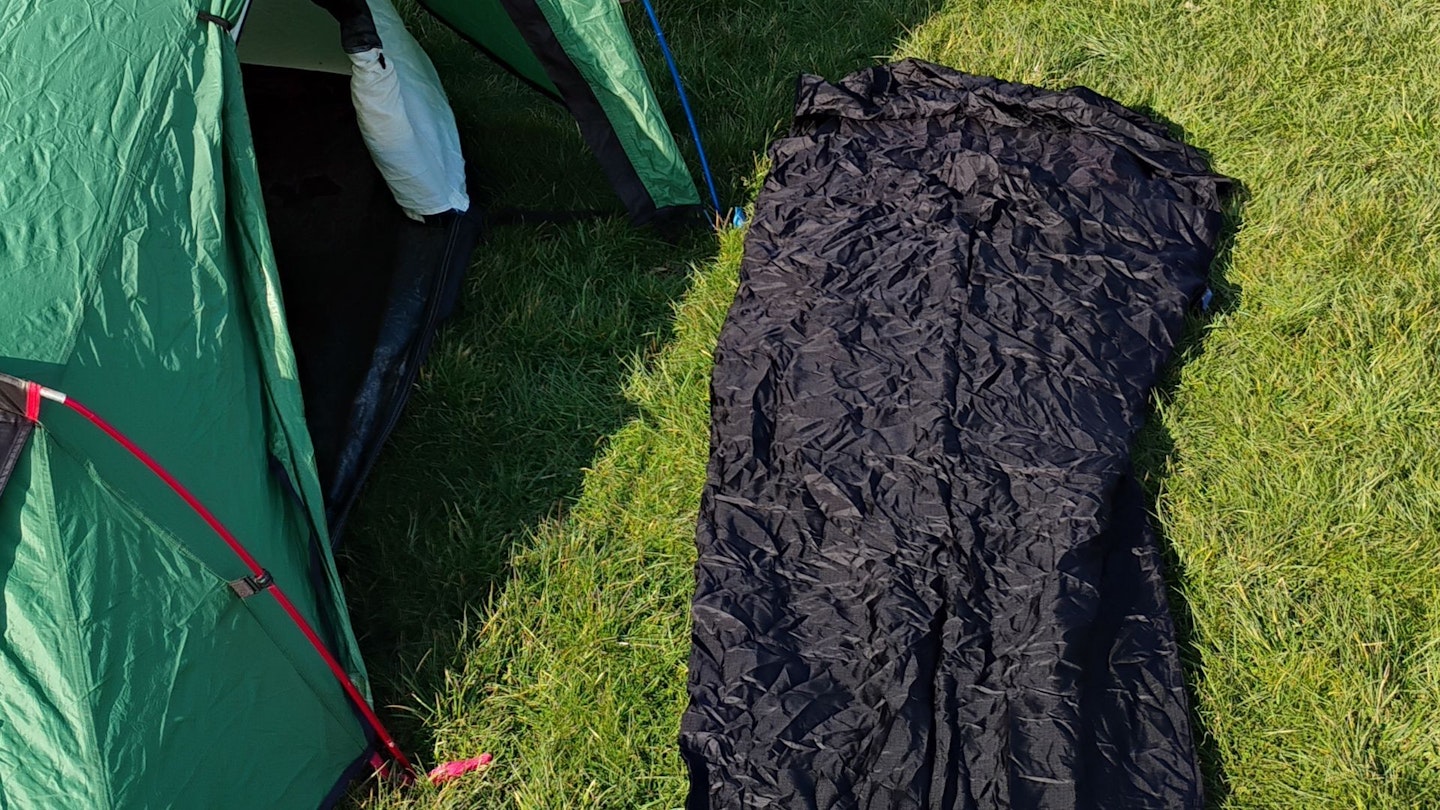
Silk liners are the most lightweight and compact of all liner types. They also tend to be the most expensive. For some people silk is the most comfortable material, as it’s very soft and smooth against your skin.
A silk liner is very versatile: it could be equally useful during a Mediterranean summer camping trip or a winter alpine expedition.
In the heat, you might find that your sleeping bag is too hot, but you don’t want to just sleep with nothing over you. Here, a silk liner comes to life. It’s comfortable to sleep in and will help you thermoregulate by wicking sweat.
On a cold night, you won't want to depend on a silk liner as it won’t add much warmth at all. But it’ll wick moisture away from your sleeping bag and protect it against dirt. This prolongs the life of your sleeping bag.
You’ll feel the benefit during the night as well, as it’ll help you to thermoregulate. But make sure your sleeping bag is warm enough on its own.
Cotton
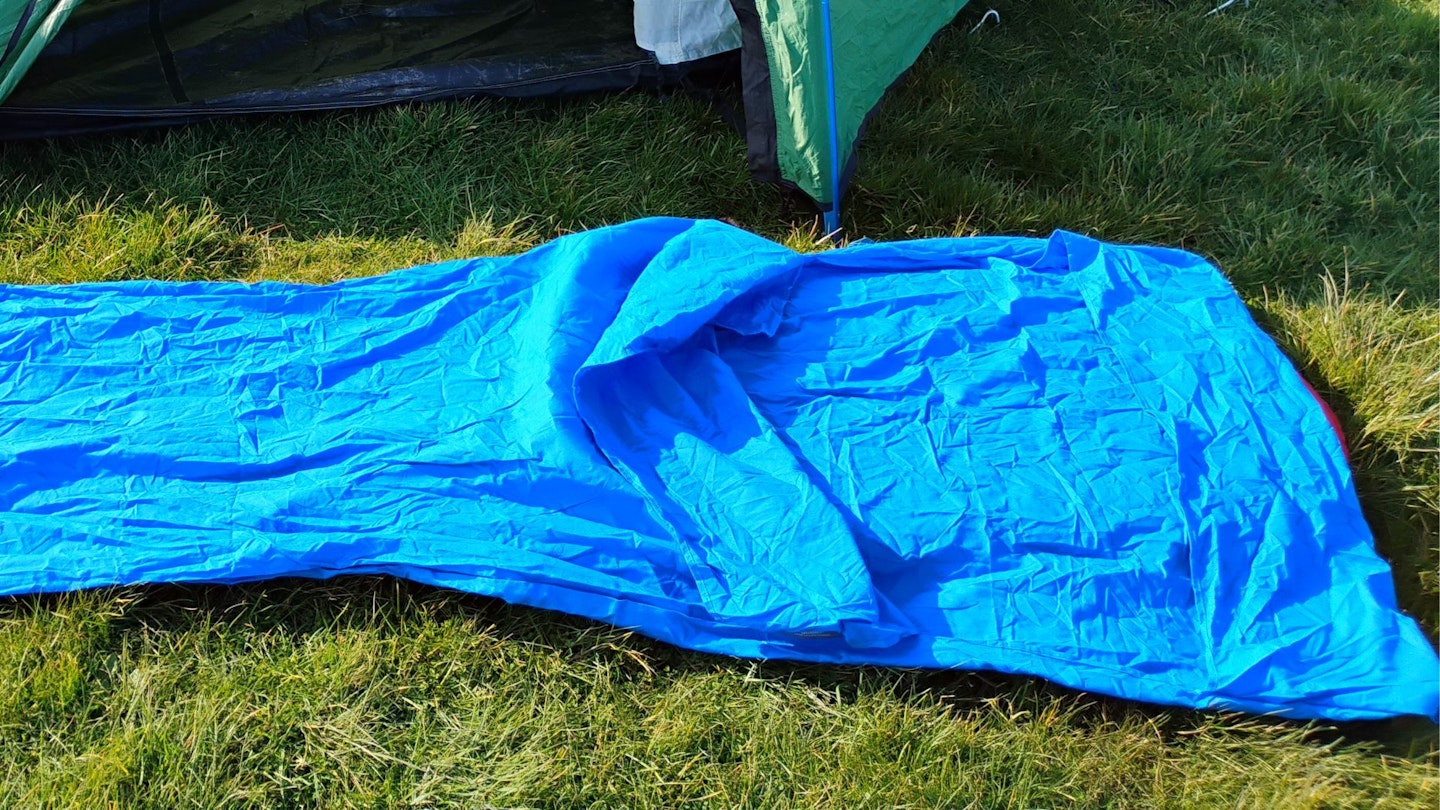
If you like to feel like you’re stepping into bed when you get into your sleeping bag, you’ll prefer cotton and polycotton liners. Cotton liners are super easy to wash and maintain, plus they tend to be very durable. They’re also generally more budget-friendly than silk or synthetic options.
We wouldn’t recommend taking a cotton liner on backpacking trips though, as they tend to be heavier and bulkier. They also take a long time to dry.
A cotton liner sits somewhere between a silk liner and a fleece-lined liner in terms of warmth. If in doubt, consider whether you’d be warm enough taking your bedsheet with you, as a cotton liner feels basically the same.
Overall, a cotton liner is a good choice for staying in hostels or mountain refuges, especially if you don’t like the feeling of silk or synthetic fibres. But it won’t save you any space or weight on a hiking trip.
Polyester
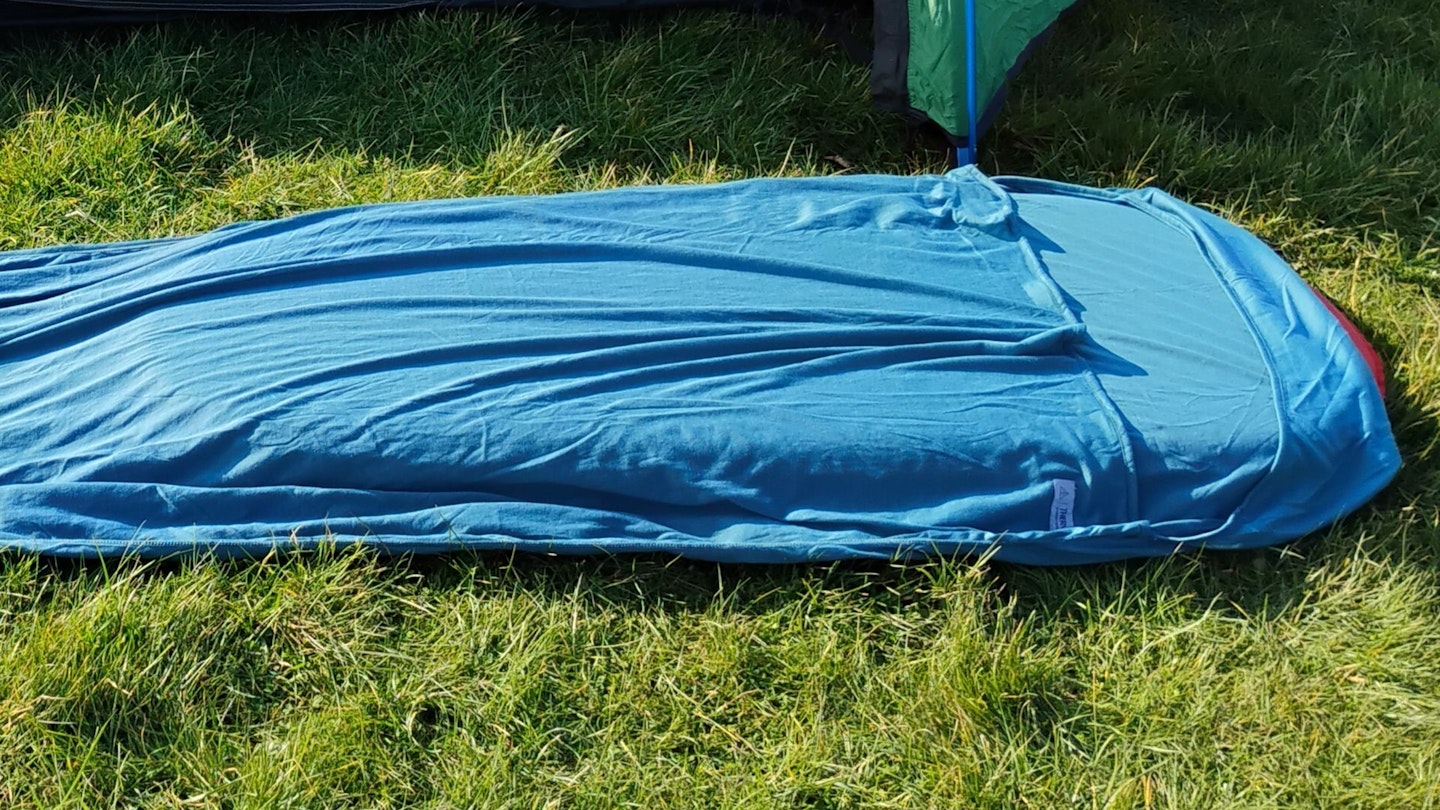
You might think liners which are 100% polyester all feel the same, but they can actually feel quite different.
The Rab Thermic Neutrino, for example, feels like a fleece. But the Sea to Summit Reactor and Thermarest Synergy liners, which are also made fully from polyester, feel more like a base layer.
Fleece-like liners are much warmer and they’re also less able to wick sweat, but may pick up less odour. A fleece liner is best if your sleeping bag needs a significant boost in warmth.
If you don’t need a massive warmth boost, but would still like a little extra warmth (plus all of the other benefits of a liner), then a base layer-style liner would be best. These are a lot more stretchy than cotton or silk liners, so they’re comfortable to sit up in. You can even walk around in the Sea to Summit Reactor liner.
In general, polyester might not feel as comfortable as silk or cotton when it’s hot, but polyester liners tend to dry faster – especially thinner ones. They’re also more durable than a silk liner, which can tear more easily.
Overall, a polyester liner is a good choice for backpacking trips where you need a little extra warmth than a silk liner.
Are sleeping bag liners a good idea?
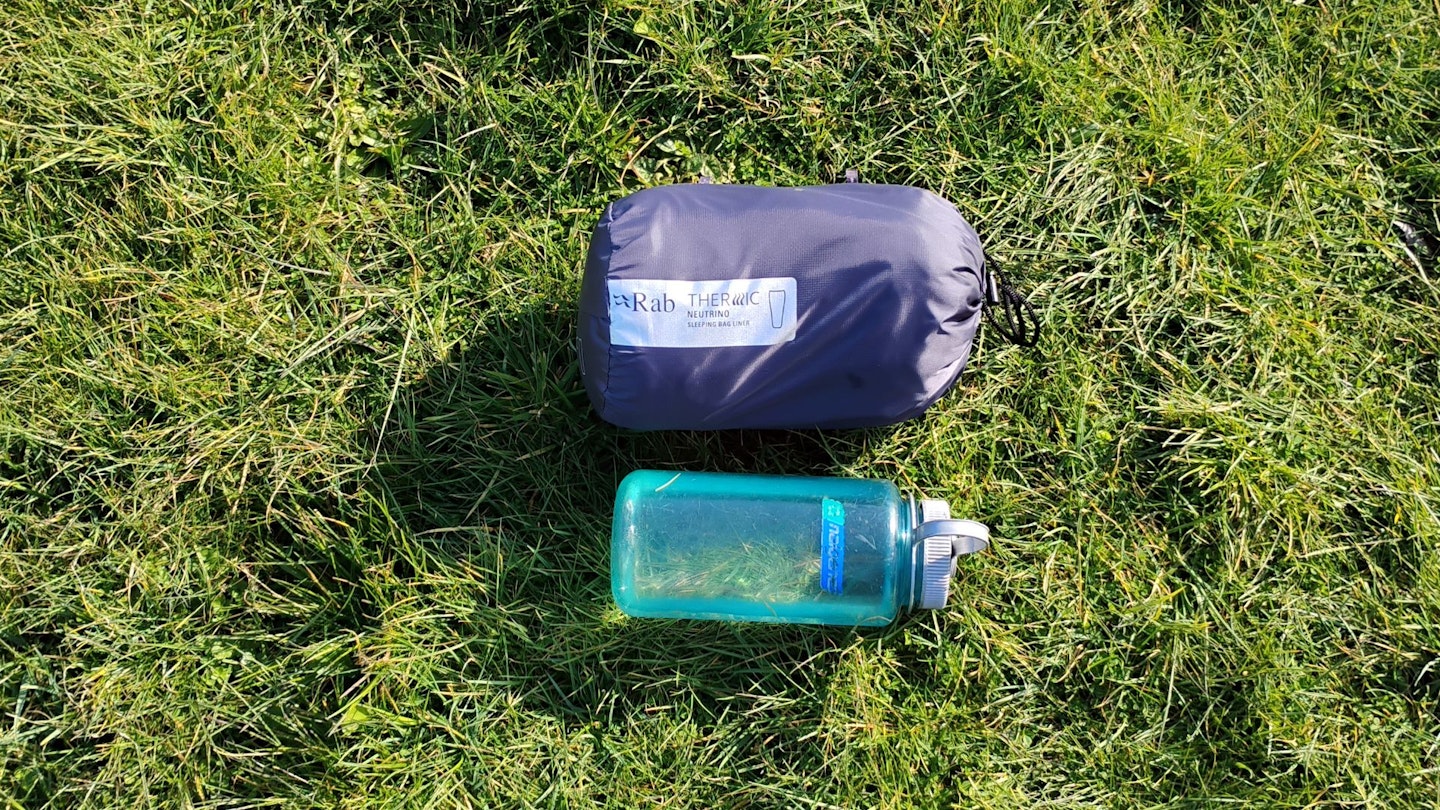
In almost all cases, sleeping bag liners are an excellent idea – no matter what kind of trip you’re going on.
On a basic level, a sleeping bag without a liner is a bit like a duvet without any bedsheets. Liners protect your sleeping bag from moisture and dirt, helping it to live longer. Unless you’re going ultralight and aren’t too fussed about the lifespan of your sleeping bag, it’s best to bring along a liner.
Having said that, it’s a bad idea to depend solely on a liner to keep you warm on a cold night. If you’re camping during winter, it might be best to buy a warm sleeping bag rather than adding a warm liner to your not-so-warm sleeping bag.
Even in this case though, you’d still be grateful for a lightweight silk liner to protect your sleeping bag.
Beyond its benefit to your sleeping bag, a liner will help you to feel snug when you’re camping, if you choose the right one. As an experienced camper, I would never go camping without my silk liner – my sleeping bag wouldn’t be the same without it.
How much warmer does a liner make your sleeping bag?
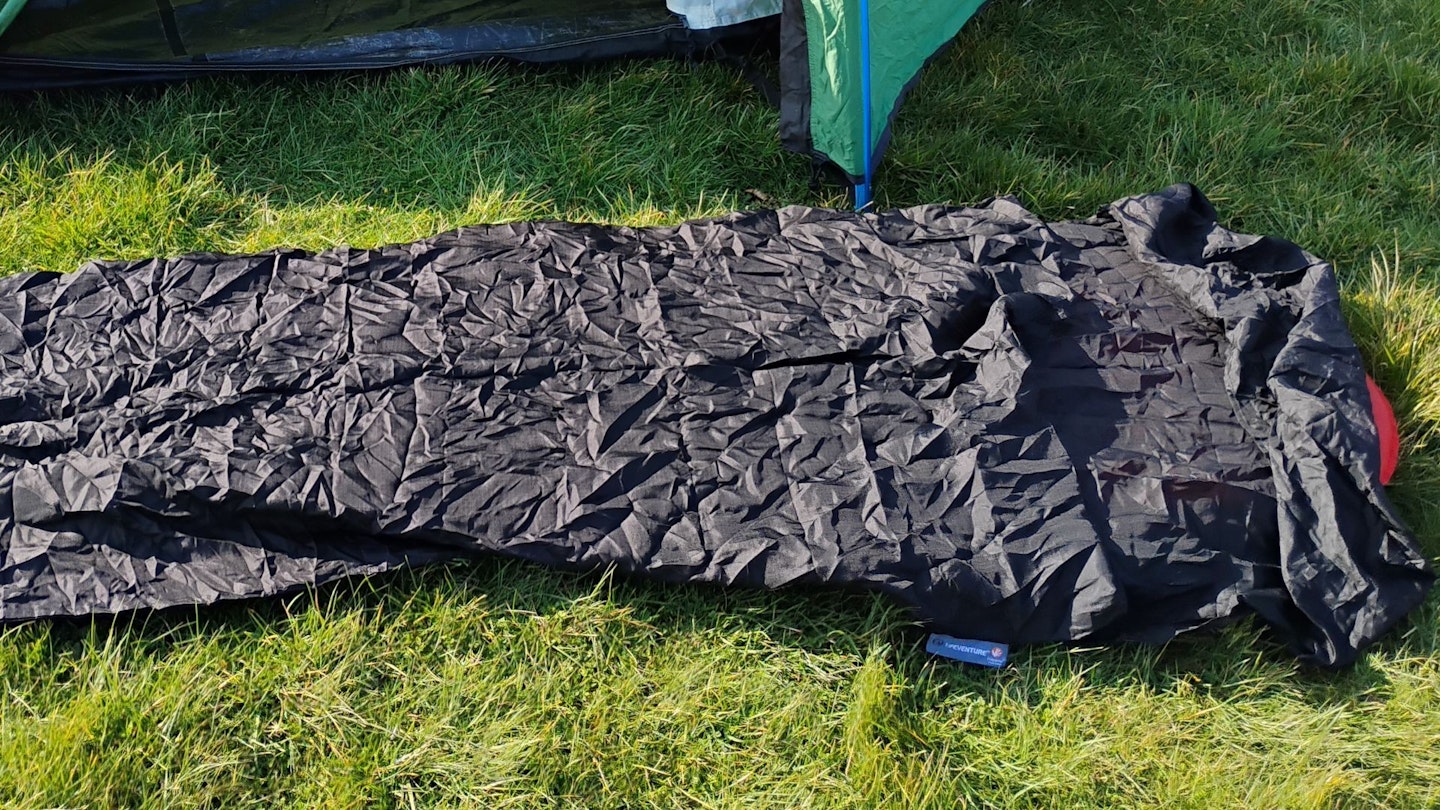
The amount of warmth a liner adds to your sleeping bag depends on both the liner and your sleeping bag.
A fleece liner, like the Rab Thermic Neutrino, will add the most warmth to your sleeping bag. It’s like sleeping wrapped up in a lightweight fleece.
On the other hand, synthetic liners like the Thermarest Synergy and Sea to Summit Reactor are like being covered in a base layer.
Sea to Summit claims that its liner will “increase 3-season sleeping bag's temperature rating by up to 6%”, while Therm-a-Rest says it’ll “contribute 3C of warmth to your sleeping system”.
Although you should take these claims with a pinch of salt, we do find synthetic liners to be pretty effective at keeping you warm.
Silk liners won’t make your sleeping bag much warmer, but they’ll add to its overall comfort and longevity.
However, in all of this discussion, the amount of warmth a liner adds also depends on your sleeping bag itself. The warmer your sleeping bag, the less you’ll notice its effect.
This is because most sleeping bags are far more insulating than any liner. So, the warmer your sleeping bag is, the smaller the insulation boost your liner provides relative to it.
For more advice, read our article on how to pack for ultralight backpacking.
About the author

Digital writer Evie loves nothing more than camping in high and remote places. Her trusted silk liner has accompanied her on pretty much every camping trip she's ever been on, from the Cambodian jungle to the Atlas mountains.








